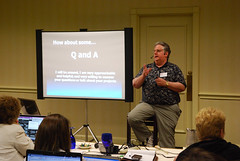Do you spend hours of time on Twitter?
Let me rephrase that.
Does Twitter mean something to your business?
If so, what would happen if Twitter went down? If you lost all of your followers? What would happen if someone started spamming from your account? (Could you imagine if someone started sending out porn links from the @microsoft “verified” account?) Do you have a contingency plan?
The fact of the matter is having a contingency plan is sometimes what makes and breaks a company. Let’s take a look at Toyota for example. They’re suffering some major PR bruising right now because they’ve failed to act timely and confidently in the face of their automotive problems.
Let’s compare that to Johnson & Johnson – the definitive contingency planning company. When someone reported they’d found a needle in their shampoo – J&J went into action. They’d already brainstormed that problem and had a book with the fix already written. Within a week they had all the affected shampoo out of stores and new “Needle-Free” labeled shampoo on the shelves.
We know that Twitter has become part of our business because you can barely watch any news program that doesn’t cite Twitter or invite you to comment on Twitter. More and more people are joining Twitter, following companies, brands and people and “believing” what is being tweeted. That being said, it’s also largely out of our control. Everyday, people are encountering twitter problems like:
- Spammers
- Lost Followers
- Lost Profile Photo
- Deleted Account
- or the inability to log-in among others
The key is to get the solution in your hands BEFORE you have a problem. For example there are two things you have to do to stop a spammer should they get access to your account. Unless you do both, you likely won’t stop them. And once you see spam with your name on it, how long do you have to fix it before your customers’ notice? Before they complain? Before they unfollow you?
I wrote a report called TwitterGlitch that highlights these problems, how to fix them, who to talk to at Twitter to get them fixed and even which third party “help desks” are monitored by Twitter.
The smartest thing you can do to protect your Twitter account is to click on “Profile” everyday and make sure all the tweets on your front page were left by you. And if you’re using Tweetdeck or Hootsuite, make it a habit to log-in to Twitter.com once per week to check your account log-in. Otherwise, get a copy of TwitterGlitch and have the solutions to your problems in your hands. Don’t make finding the solutions your second problem.

![Reblog this post [with Zemanta]](https://img.zemanta.com/reblog_e.png?x-id=a44d633f-155e-4de3-9a70-e00e2ff4dbe0)





